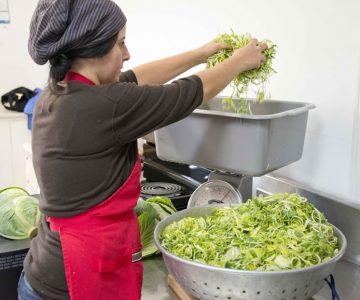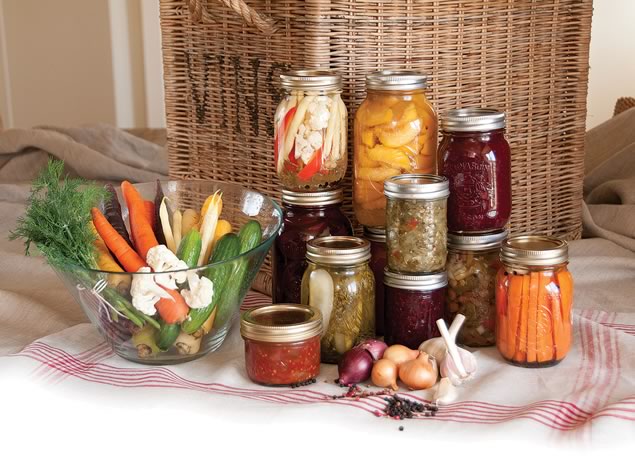Simple Sauerkraut
Here’s a basic sauerkraut recipe to get you started on your own fermented foods journey.
Andrea Barbuto of Wild Culture Ferments builds complex varieties of sauerkraut using wild foraged greens, spices such as cumin and vegetables including carrots and other roots. Here, she shares a basic sauerkraut recipe to get you started on your own fermented foods journey.
Simple Sauerkraut
Ingredients
- 2 lbs green cabbage (about one small cabbage)
- 1 tbsp sea salt
- 1 tsp seasoning (i.e. caraway, dill, mustard seed)
Instructions
- Choose your fermentation vessel. A one-litre glass mason jar is best for beginners. Ceramic vessels are also a good option. Stay away from stainless steel and plastic (unless it's food-grade), as the acidic fermentation juices will corrode the vessel.
- Wash your jar with hot water and soap.
- If you are using a metal lid, cut out a square piece of parchment paper to place between the jar and the lid. This will ensure the acidic fermentation juices will not cause the metal ring to rust.
- Clean all other materials and surfaces with hot soapy water and allow them to air dry.
- You're ready to chop and salt. Remove any cabbage leaves that are blemished and peel off one whole leaf and set it aside for later.
- Cut your cabbage into quarter sections and remove the core.
- Slice across the grain as thinly as you can to shred your cabbage.
- As each quarter is shredded, transfer the cabbage to a large bowl and sprinkle with some of the salt.
- Keep adding cabbage and salt in layers until you’re out of both.
- Add spices and start to massage the mixture until liquid starts to come out of the cabbage. This is your brine.
- Transfer the contents of the bowl to your jar and pack it down tightly. The brine/liquid should start to rise above the cabbage.
- Do not overfill the jar. Leave at least one inch of space from the top of your jar.
- Take the cabbage leaf that you have set aside and cut it so it fits on top of the kraut and use it to keep all the vegetables submerged in the brine.
- Screw the lid on (but not too tightly). If using a metal lid, place a piece of parchment paper between the jar and the lid so that the fermentation juices do not corrode the metal.
- Caring for your sauerkraut: Keep your jar out of direct sunlight. If the lid is on tightly, be sure to open it daily to allow the gasses to escape.
- Ensure that the cabbage stays submerged under the brine, especially for the first three days.
- Once fermentation begins the juices will start to bubble and the vegetables will expand. For this reason, place the jar on a plate or in a bowl, especially for the first few days in case some of the brine overflows.
- Start tasting after the first three days, and continue to taste every few days. The flavour and texture will continue to develop over time.
- After tasting, be sure to pack all the cabbage back down under the brine. And always taste with a new utensil. No double-dipping!
- Transfer to the refrigerator once the desired level of flavour has been achieved. Storage: Sauerkraut can be refrigerated for up to a few months. Use clean utensils each time to extract the sauerkraut from the jar.
Related Stories

Brine Dining with Sauerkraut
Nov 22, 2019 | | FoodSauerkraut, kefir, kimchi and other tangy fermented foods have gone from traditional to trendy.

Dilly Pickles
May 16, 2012 | | FoodWhen pickling whole cucumbers, take a thin slice off the blossom end to help keep the pickles crisp.

The Practical Art of Preserving
May 18, 2012 | | Back IssuesLearn to make canning part of your food strategy and keep the whole thing manageable, by year-round canning.






